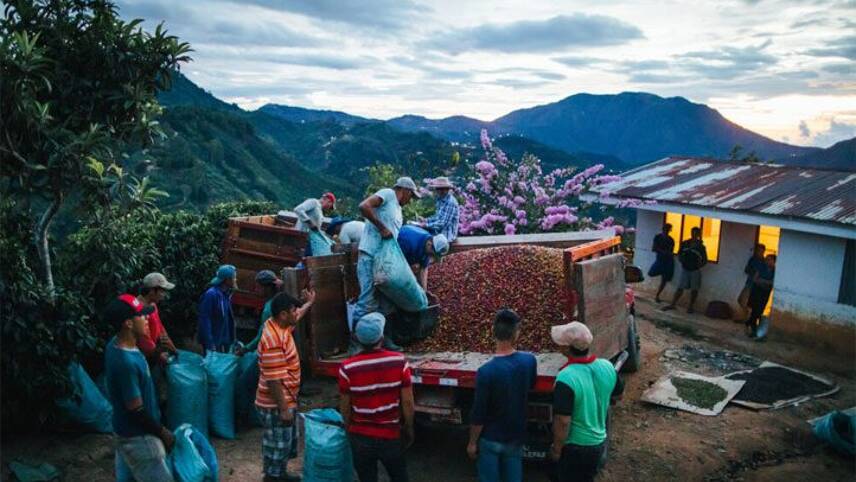Register for free and continue reading
Join our growing army of changemakers and get unlimited access to our premium content

Image: Starbucks/ Joshua Trujillo
The coffee chain first announced the overarching sustainability vision in January 2020, stating that it will need to at least halve water use, waste and emissions on an absolute basis to achieve this future for the business.
Since then, it has fine-tuned strategies on renewable energy procurement, regenerative agriculture and low-carbon menu items.
This week, the company announced a further string of updates, revealing priority focus areas for carbon reduction and coffee-specific goals on water conservation. On the former, Starbucks stated that the majority of its emissions come from upstream Scope 3 (indirect) sources, with the “first ten feet” of the supply chain – the farm to port portion – providing ample opportunities for action.
Starbucks will decrease emissions in this area by equipping farmers with precision agronomy tools that help prevent the over-use of resources like water, fertilizer and pesticides. Precision agronomy also helps avoid intensive processes that can degrade soil quality, limiting the ability of soil to sequester carbon and host biodiversity. Farmers will also be trained and supported to plant disease-resistant coffee tree varieties. These schemes can be delivered through Starbucks’ existing Farmer Support Centre, which acts as a research and education hub.
On a broader level, Starbucks will finance and support forest conservation and restoration projects in at-risk landscapes across its value chain. Starbucks’ partner for this work is Conservation International.
Starbucks believes that it will be able to certify the ‘green coffee’ portion of its value chain as carbon neutral this decade by taking these steps. Green coffee beans are simply beans that have not yet been roasted.
It is also working to have its carbon reduction targets verified by the Science-Based Targets initiative (SBTi) and hopes to announce a positive outcome in the coming months.
Plans that hold water
Aside from carbon, water is a major focus in Starbucks’ new plans, which detail how it intends to halve its water footprint by 2030.
Starbucks’ new water plans are three-pronged. They detail commitments to ensure that new wet mills are water-efficient, after Starbucks purchased 600 mills over the past year that deliver up to 80% water savings in coffee processing. Such mills are known as ‘eco-mills’.
Existing mills, meanwhile, will be supported to make existing machinery and technology more water-efficient. This work will be carried out through Starbucks’ existing Tryer Centre.
Starbucks will also contribute to water replenishment projects “at origin” – in river basins used by communities across its coffee supply chain. Conservation International will be a partner here, but, more broadly, Starbucks will collaborate with local organisations as well as other businesses using the same river basins. It is notably a member of the UN Global Compact’s CEO Water Mandate, along with the likes of Microsoft and Coca-Cola, and of the Water Resilience Coalition.
“For farmers and their communities, we know it is critical we work together to address the challenges they face associated with climate change which are making it increasingly difficult to grow high-quality coffee,” Starbucks’ senior vice president of global coffee, tea and cocoa, Michelle Burns, said.
“By reducing carbon emissions and conserving water, we can help farmers be more productive while we are also contributing to a better planet and bringing coffee to customers in a sustainable way.”
Spotlight on Sustainable Development Goal 6: Clean Water & Sanitation
edie has launched its latest SDG Spotlight report, looking at how businesses can transform to help achieve the Sustainable Development Goals (SDGs) post-lockdown, with the latest focusing on Goal 6: Clean Water & Sanitation.
Featuring an exclusive industry viewpoint from the senior research director at the Qatar Environment and Energy Research Institute’s (QEERI) Water Centre, Dr Jenny Lawler, and an exclusive foreword from WaterAid’s senior private sector advisor Hannah Greig, the FREE report provides a snapshot of global progress towards SDG 6 so far and best-practice advice for businesses looking to advance water stewardship across their value chains.
Click here to download the SDG Spotlight report for Goal 6.
Sarah George


Please login or Register to leave a comment.